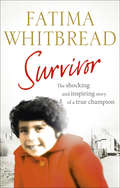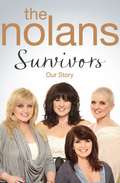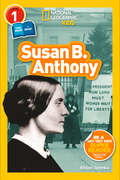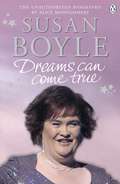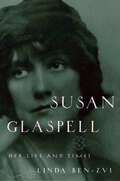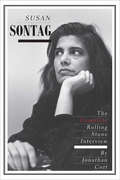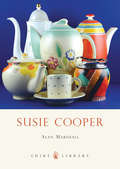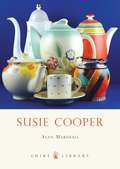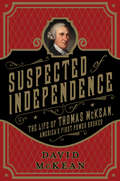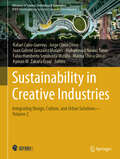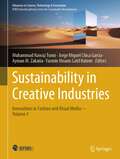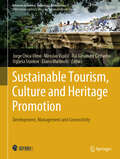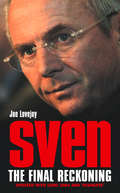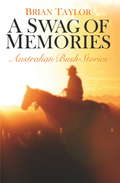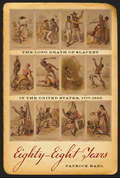- Table View
- List View
Survivor: From childhood abuse to a life of crime and prostitution
by Tara O’ShaughnesseyVictim. Prostitute. Gangster’s Wife. Survivor.Tara grew up in squalor on the island of Alderney. When she was only four, she was sexually abused by one of her mother’s many lovers, a horror that continued for five long years. As a teenager, desperate to escape the toxic environment at home, she fled to London – but was swiftly drawn into working as a prostitute. She became involved with some of London’s most notorious gangsters – even marrying one – but when she realised the danger she was inflicting on her children, she knew she had to find a way to get out. This is the inspiring story of one woman’s will to survive, and to fight for a better life.
Survivor: Auschwitz, The Death March And My Fight For Freedom (Extraordinary Lives, Extraordinary Stories of World War Two)
by Sam Pivnik**For fans of The Tattooist of Auschwitz**Sam Pivnik is the ultimate survivor from a world that no longer exists. On fourteen occasions he should have been killed, but luck, his physical strength and his determination not to die all played a part in Sam Pivnik living to tell his extraordinary life story. In 1939, on his thirteenth birthday, his life changed forever when the Nazis invaded Poland. He survived the two ghettoes set up in his home town of Bedzin and six months on Auschwitz's notorious Rampkommando where prisoners were either taken away for entry to the camp or gassing. After this harrowing experience he was sent to work at the brutal Furstengrube mining camp. He could have died on the 'Death March' that took him west as the Third Reich collapsed and he was one of only a handful of people who swam to safety when the Royal Air Force sank the prison ship Cap Arcona, in 1945, mistakenly believing it to be carrying fleeing members of the SS. He eventually made his way to London where he found people too preoccupied with their own wartime experiences on the Home Front to be interested in what had happened to him. Now in his eighties, Sam Pivnik tells for the first time the story of his life, a true tale of survival against the most extraordinary odds.
Survivor: The Shocking and Inspiring Story of a True Champion
by Fatima WhitbreadFatima Whitbread had the worst possible start in life. Abandoned as a baby, she spent much of her childhood in and out of children's homes. A brief, disastrous stay with her birth mother saw her raped by her mother's drunken boyfriend - while her mother held a knife to her throat to 'quieten her down'. Fatima was only twelve at the time. Athletics was her saviour: local athletics coach Margaret Whitbread took the young Fatima under her wing, eventually adopting her. Fatima competed in three Olympics, winning bronze at the 1984 Los Angeles Games. In 1986 she set a world record, and the following year in Rome became world champion and was voted BBC Sports Personality of the Year. But then Fatima faded from the public eye, leaving many to wonder where she had gone. After the cheering stopped, Fatima faced prejudice, penury, scandal and heartbreak. Survivor describes how she defeated all her demons to rise triumphantly from the ashes once again, this time as queen of the jungle. Almost 13 million people watched her on I'm a Celebrity, and after surviving 20 days in the Australian heat, she has millions of new fans eager to know more about Fatima the woman: the forthright, focused, slightly bossy, charismatic single mum who knows how to transform even the most devastating experiences into lessons in life. This is the unforgettable story of a true champion, who triumphed against the worst hardships imaginable.
Survivor on the River Kwai: The Incredible Story of Life on the Burma Railway
by Reg TwiggSurvivor on the River Kwai is the heartbreaking story of Reg Twigg, one of the last men standing from a forgotten war. Called up in 1940, Reg expected to be fighting Germans. Instead, he found himself caught up in the worst military defeat in modern British history - the fall of Singapore to the Japanese.What followed were three years of hell, moving from one camp to another along the Kwai river, building the infamous Burma railway for the all-conquering Japanese Imperial Army. Some prisoners coped with the endless brutality of the code of Bushido by turning to God; others clung to whatever was left of the regimental structure. Reg made the deadly jungle, with its malaria, cholera, swollen rivers, lethal snakes and exhausting heat, work for him. With an ingenuity that is astonishing, he trapped and ate lizards, harvested pumpkins from the canteen rubbish heap and with his homemade razor became camp barber.That Reg survived is testimony to his own courage and determination, his will to beat the alien brutality of camp guards who had nothing but contempt for him and his fellow POWs. He was a risk taker whose survival strategies sometimes bordered on genius. Reg's story is unique.Reg Twigg was born at Wigston (Leicester) barracks on 16 December 1913. He was called up to the Leicestershire Regiment in 1940 but instead of fighting Hitler he was sent to the Far East, stationed at Singapore. When captured by the Japanese, he decided he would do everything to survive.After his repatriation from the Far East, Reg returned to Leicester. With his family he returned to Thailand in 2006, and revisited the sites of the POW camps. Reg died in 2013, at the age of ninety-nine, two weeks before the publication of this book.
Survivors: Our Story
by The NolansFour sisters, four very different characters. But they have always been there for each other, through the hard times as well as the good. Now they describe growing up performing from as young as two, what it was like when fame suddenly hit and how it caused rifts in their close-knit family. Linda opens up about her devastation when her beloved husband died just as she was coping with breast cancer. Bernie tells how she suffered through the hearbreak of losing her unborn child and recently faced her own cancer battle, Coleen talks about her marriages and reveals new secrets, and Maureen describes her sadness at the devastating family feud that saw her much loved older sisters fall out with her, Linda, Bernie and Coleen. And they share the joy of getting back on stage for their thirtieth anniversary tour - four survivors who found that age doesn't matter when it comes to having a great time.
Susan B. Anthony (Readers Ser.)
by National Geographic Kids Kitson JazynkaMeet one of the most important figures in women's and U.S. history. Just in time for the 100th anniversary of the 19th amendment giving U.S. women the right to vote, learn about Susan B. Anthony's remarkable life, from her childhood to her groundbreaking work.
Susan Boyle: Dreams Can Come True
by Alice MontgomeryFrom that moment when Susan Boyle burst onto our screens on Britain's Got Talent, she has become an unexpected phenomenon, and has gone on to become the creator of the fastest selling female debut album of all time - in the UK and worldwide - hitting the number one spot in the US, UK, Australia, New Zealand, Canada and Ireland. Susan's own personal dream has finally come true, but the phenomenal success story doesn't end here - Susan has arrived and she's here to stay.This book will be the first to tell the full story of Susan's incredible journey from rags to riches, from West Lothian to Times Square. Ever since her mesmerising, historic performance on Britain's Got Talent, Susan has captured the heart of millions. Hers is a very modern fairytale that is at once uplifting and compelling. Bestselling biographer Alice Montgomery charts her meteoric rise from humble beginnings to global superstardom, exploring the relationships, events and people that have played a role in her astonishing story - a 21st century fairytale that became reality.
Susan Glaspell: Her Life and Times
by Linda Ben-Zvi"Venturesome feminist," historian Nancy Cott's term, perfectly describes Susan Glaspell (1876-1948), America's first important modern female playwright, winner of the 1931 Pulitzer Prize for drama, and one of the most respected novelists and short story writers of her time. In her life she explored uncharted regions and in her writing she created intrepid female characters who did the same. Born in Davenport, Iowa, just as America entered its second century, Glaspell took her cue from her pioneering grandparents as she sought to rekindle their spirit of adventure and purpose. A journalist by age eighteen, she worked her way through university as a reporter. In 1913 she and her husband, fellow Davenport iconoclast George Cram "Jig" Cook, joined the migration of writers from the Midwest to Greenwich Village, and were at the center of the first American avant-garde. Glaspell was a charter member of its important institutions--the Provincetown Players, the Liberal Club, Heterodoxy--and a close friend of John Reed, Mary Heaton Vorse, Max Eastman, Sinclair Lewis, and Eugene O'Neill. Her plays launched an indigenous American drama and addressed pressing topics such as women's suffrage, birth control, female sexuality, marriage equality, socialism, and pacifism. Although frail and ethereal, Glaspell was a determined rebel throughout her life, willing to speak out for those causes in which she believed and willing to risk societal approbation when she found love. At the age of thirty-five, she scandalized staid Davenport when she began an affair with then-married Jig Cook. After his death in Delphi, where they lived for two years, she began an eight-year relationship with a man seventeen years her junior. Youthful in appearance, she remained youthful and undaunted in spirit. "Out there--lies all that's not been touched--lies life that waits," Claire Archer says in The Verge, Glaspell's most experimental play. The biography of Susan Glaspell is the exciting story of her personal exploration of the same terrain.
Susan Isaacs: A Life Freeing the Minds of Children
by Philip GrahamThis revised and expanded edition of Susan Isaacs: A Life Freeing the Minds of Children by Philip Graham, provides a comprehensive biography of a highly influential educationist and psychoanalyst. The book covers Isaacs’ childhood through to the end of her life, making it of great interest to historians of British education and of psychoanalysis as well as to practicing early years teachers and psychoanalysts. Graham describes the origins of the theories behind Isaacs’ work while also placing her contribution into context with other contemporary educationists. He draws on a range of sources including her own published and unpublished papers, multiple archives and intimate letters. Such wealth of information and anecdotes gives an insight into her childhood, marriage, and career creating a deeper understanding of both Isaacs’ personal life and her achievements. As only the second biography on Isaacs, this book is a valuable resource that shines a light on the life of a figure who has often been neglected in this field of study. It provides a shift away from the various male-dominated accounts currently prevalent within this area of research. Susan Isaacs is crucial reading to raise our awareness and appreciation of the person behind the work, while also highlighting and celebrating the impact she has made on today’s education and psychoanalytic practice.
Susan Sontag: The Complete Rolling Stone Interview
by Jonathan Cott“One of my oldest crusades is against the distinction between thought and feeling, which is really the basis of all anti-intellectual views: the heart and the head, thinking and feeling, fantasy and judgment . . . and I don’t believe it’s true. . . . I have the impression that thinking is a form of feeling and that feeling is a form of thinking.” Susan Sontag, one of the most internationally renowned and controversial intellectuals of the latter half of the twentieth century, still provokes. In 1978 Jonathan Cott, a founding contributing editor of Rolling Stone magazine, interviewed Sontag first in Paris and later in New York. Only a third of their twelve hours of discussion ever made it to print. Now, more than three decades later, Yale University Press is proud to publish the entire transcript of Sontag’s remarkable conversation, accompanied by Cott’s preface and recollections. Sontag’s musings and observations reveal the passionate engagement and breadth of her critical intelligence and curiosities at a moment when she was at the peak of her powers. Nearly a decade after her death, these hours of conversation offer a revelatory and indispensable look at the self-described "besotted aesthete" and "obsessed moralist." “I really believe in history, and that’s something people don’t believe in anymore. I know that what we do and think is a historical creation. . . .We were given a vocabulary that came into existence at a particular moment. So when I go to a Patti Smith concert, I enjoy, participate, appreciate, and am tuned in better because I’ve read Nietzsche.” “There’s no incompatibility between observing the world and being tuned into this electronic, multimedia, multi-tracked, McLuhanite world and enjoying what can be enjoyed. I love rock and roll. Rock and roll changed my life. . . .You know, to tell you the truth, I think rock and roll is the reason I got divorced. I think it was Bill Haley and the Comets and Chuck Berry that made me decide that I had to get a divorce and leave the academic world and start a new life.”
Susie Cooper (Shire Library #719)
by Alan MarshallDuring her sixty-five-year career, Susie Cooper introduced more than 4,500 ceramic patterns and shapes, making her one of the most prolific, versatile and influential designers the industry has ever seen. Between the 1920s and 1980s she moved from the bold hand-painting of the 'Jazz Age' through delicate wash banding and aerograph techniques to sophisticated lithographic transfer printing on both earthenware and bone china. Cooper not only led the charge of gifted female designers in the male-dominated Potteries but also pioneered the role of women in factory management. Alan Marshall here charts her progress from the creation of patterns for Gray's Pottery in the 1920s, to running her own Susie Cooper Productions from the 1930s to the 1950s, and designing for Wedgwood from the 1960s to the 1980s.
Susie Cooper (Shire Library #719)
by Alan MarshallDuring her sixty-five-year career, Susie Cooper introduced more than 4,500 ceramic patterns and shapes, making her one of the most prolific, versatile and influential designers the industry has ever seen. Between the 1920s and 1980s she moved from the bold hand-painting of the 'Jazz Age' through delicate wash banding and aerograph techniques to sophisticated lithographic transfer printing on both earthenware and bone china. Cooper not only led the charge of gifted female designers in the male-dominated Potteries but also pioneered the role of women in factory management. Alan Marshall here charts her progress from the creation of patterns for Gray's Pottery in the 1920s, to running her own Susie Cooper Productions from the 1930s to the 1950s, and designing for Wedgwood from the 1960s to the 1980s.
Suspected of Independence: The Life of Thomas McKean, America's First Power Broker
by David McKeanThe Founding Fathers, mythologized for their fervor for and dedication to democratic principles, were as heavily mired in partisanship, plagued by petty infighting, and driven by personal gain as, arguably, the most notorious members of today's Congress. In fact, David McKean reveals in this brilliant panoramic history that today's muddled political system is heavily indebted to a tradition begun from the outset, and perhaps to no one more so than Thomas McKean.Thomas McKean was America's first political operator-a man who installed himself at the center of every major political event of his time. In an extraordinary career that spanned almost half a century, McKean represented Pennsylvania and Delaware to the Stamp Act Congress and both Continental Congresses, and was instrumental in the creation of both the Articles of Confederation and the Constitution. He was one of the first to lobby for independence from British rule, the last to sign the Declaration of Independence, and was briefly the second President of Congress while George Washington was away. For twenty-two years, he served as chief justice of the Pennsylvania Supreme Court, during which time his rulings would set the precedent for what was to become the American legal system. He was elected Governor of Pennsylvania three times, during which time he fostered a tradition of partisanship in his government. Although lesser known than his friends at different times-John Adams, George Washington, and Thomas Jefferson-McKean was among the most prominent of the Founding Fathers, and the only one to serve in all three branches of government.But McKean was also a difficult, arrogant man whose political beliefs seemed to his adversaries to be expediently flexible. In the 1770s, when the bulk of McKean's constituency in Pennsylvania consisted of radical farmers and artisans who favored political participation regardless of property ownership and independence-and so McKean did too. It was on this platform he quickly rose to become a populist leader with mass appeal. As political parties began to emerge in the decades following independence, Thomas McKean, like many others, grew increasingly partisan, and fervently believed that political loyalty should play as important a role as competence in both the selection and removal of public servants.John Adams wrote that the early Founding Father, his colleague in the Continental Congress, was the one of the few "to see more clearly to the end of the business than any others in the whole body.” by a quintessential DC insider, and inheritor to Thomas McKean's aptitude for nimble politicking, The Revolutionary Life of Thomas McKean offers a complex historical biography of a man who had an invaluable impact on the nature of governance in this country for centuries.
The Sussex Devils: A true story of the 1980s Satanic panic
by Marc Heal'Heartbreaking and breathtaking.' – Clive Barker, author of HellraiserIn 2012 Marc Heal stumbled across a yellowed newspaper cutting about Derry Knight: a man who claimed that he belonged to a secret Satanic group operating at the highest levels of British society. Helped by John Baker, vicar of the Sussex village of Newick, Knight had falsely raised large sums from wealthy gentry on the pretext of destroying powerful items of Satanic regalia.Heal threw away the cutting but it made him deeply uneasy. Why could he remember nothing about the Knight affair even though he had grown up at its epicentre? Why did he know so much about the people in the story and yet recalled so little about it? Finally, he faced up to the reason for the blank: the trial had taken place in the weeks immediately after the defining trauma of his life. In December 1985 an elder from his parents' evangelical Christian church attempted an exorcism on him believing he was possessed by demons. Based on extensive interviews with all the surviving witnesses this book explores the truth behind Derry Knight and the devastating effects that evangelical Christianity had on one young man.
Sussex Writers in their Landscape: Self-fulfilment in the Age of the Machine
by Peter BrandonThe Sussex landscape is here celebrated by writers and poets, both famous and lesser-known, as we trace their search for rural peace and beauty in the tumultuous years 1850 to 1939. For the first time we trace the corpus of Sussex writing which was connected to those wider events but was equally a hymn of praise to rural Sussex, seen as nourishing, sympathetic and, for some, a retreat from the stresses of burgeoning city life or the horrors of mechanised warfare. We meet Wilfred Blunt and learn of his love for his Wealden countryside; we encounter the complex Hilaire Belloc; the acute observations of Richard Jefferies and Rudyard Kipling; and the modernity of Virginia Woolf. Lesser-known writers are included too, such as Charles Dalmon or Dr Habberton Lulham, who loved spending time with the downland shepherds or with travelling folk among the byways of the county.
Sustainability in Creative Industries: Integrating Design, Culture, and Urban Solutions—Volume 2 (Advances in Science, Technology & Innovation)
by Muhammad Nawaz Tunio Jorge Chica-Olmo Rafael Cano-Guervos Juan Gabriel González Morales Fabio Humberto Sepúlveda Murillo Marina Checa Olivas Ayman M. Zakaria EraqiThis book discusses the dynamic interplay of creativity and sustainability in the realm of design, offering a captivating exploration of innovative practices and their environmental impact. From biomimetic inspirations to biophilic designs, it unveils a spectrum of ideas in sustainable architecture. It further dives into inclusive and creative designs, social sustainability for the elderly amid the pandemic. This book casts a spotlight on the intricate synergy between preserving cultural heritage and fostering creative industries. It explores the profound significance of architectural lighting, the innovative reinterpretation of traditional motifs, and the enduring allure of heritage design within its chapters, creating an engaging and thought-provoking journey. Moreover, it ventures into the Integration of Creative Design in Urban Planning, presenting a futuristic outlook that seamlessly blends technology, sustainability, and human-centric solutions. Designed for a wide audience, including professionals, educators, and students, this book is a compelling resource for those passionate about the intersection of creativity and sustainability. It offers thought-provoking ideas, informative case studies, and a glimpse into the future of design that transcends boundaries.
Sustainability in Creative Industries: Innovations in Fashion and Visual Media—Volume 3 (Advances in Science, Technology & Innovation)
by Muhammad Nawaz Tunio Jorge Miguel Chica Garcia Ayman M. Zakaria Yasmin Moanis Latif HatemIn this volume, sustainable creative industries become a beacon for innovative change, forging a path towards a conscious, harmonious world. This volume offers a panoramic view of the future, where innovations in fashion and visual media blend seamlessly with a commitment to a more sustainable and impactful world. More specifically, this volume explores the compelling interplay of sustainability, creativity, and advocacy, casting a spotlight on the transformative potential within fashion and visual media. It embarks on a journey through the innovative landscapes of fashion, where sustainability takes center stage, through an exploration of genderless mode development, contemporary patterns, and reimagined design strategies that breathe new life into tradition. As readers explore the chapters within, the symbiotic relationship between visual media and sustainability emerges, further delve into the evolution of visual communication design and the potency of Instagram microblogs in shaping perceptions and awareness. Furthermore, the role of design in disseminating critical information during disasters is unveiled and the ways in which narrative methods can ignite meaningful change explored.
Sustainable Tourism, Culture and Heritage Promotion: Development, Management and Connectivity (Advances in Science, Technology & Innovation)
by Uglješa Stankov Rui Alexandre Castanho Jorge Chica-Olmo Miroslav Vujičić Eliana MartinelliThis proceedings book explores future prospects of cultural, heritage, and religious tourism and how it can impact the socioeconomic complexity of a community and future developments. It includes chapters on contemporary digital age pilgrimage, digital interpretation as a management strategy, tourism in the era of digital communication, and the role of social media in conserving intangible cultural heritage. This book focuses on policies and mechanisms for heritage preservation. It includes cultural heritage tourism management, how the digitalization of data has impacted and further developed tourism, World Heritage classification in urban tourism destinations, cultural tourism products, and experiences. Moreover, it discusses the sustainable environment and geography in tourism. It covers topics such as ecotourism and rural sustainable development, heritage in socioeconomic sustainable development, and tourists' perceptions of tourism. Anotherpart of the book explores the social and economic impacts of tourism. It includes chapters on cycling tourism along the Elbe, residents' perceptions of the socioeconomic benefits of restaurants, architecture of historical mosques, tourism as a driver of soft power, tourists' perceptions of service quality, tourism during the Covid-19 pandemic, gastronomic narratives in tourism, and residents' perceptions of festivals. Also, it pinpoints the focus on user interaction-based development. It includes chapters on the role of community-led initiatives in heritage revitalization and addressing connectivity issues between historical and natural touristic heritage sites. These research papers provide valuable insights into the multidimensional nature of cultural sustainable tourism, covering a wide range of topics and offering diverse perspectives on its development, management, and impact.
Suture: Trauma and Trans Becoming
by KJ CerankowskiThe landscape of trauma is scattered with ghosts. Wolves hunkering in the shadows. Memory’s spectral persistence and evasion. Leaky bodies and selves gathered up in the storm of pain. Genders imposed and genders made. History’s cruel excisions, scars, the spillage of wounds. A landscape in which we are nevertheless called to build home. Here, “storytelling is a kind of suturing.” Combining memoir, lyrical essay, and cultural criticism, KJ Cerankowski's Suture: Trauma and Trans Becoming stitches together an embodied history of trauma and its ongoing impacts on the lived realities of trans, queer, and other marginalized subjects. Suture is a conjuration, a patchwork knitting of ghost stories attending to the wound as its own archive. It is a journey through many “transitions”: of gender; through illness and chronic pain; from childhood to adulthood and back again; of psyche and form in the wake of abuse and through the work of healing; and of the self, becoming in and through the ongoingness of settler colonial violence and its attendant subjugations of diverse forms of life. Refusing a traditional binary-based gender transition narrative, as well as dominant psychoanalytic narratives of trauma that center an individual process of symptom, diagnosis, and cure, Suture explores the refractive nature of trauma’s dispersed roots and lingering effects. If the wounds of trauma are disquiet apparitions—repetitions within the cut—these stories tend the seams through which the simultaneous loneliness of mourning and togetherness of queer intersubjective relations converge. Across these essays, healing, and indeed living, is a state of perpetual becoming, surviving, and loving, in the nonlinearities of trauma time, body-time, and queer time.
Sven: My Story
by Sven-Göran ErikssonPerhaps no football manager has ever had his personal life dissected as thoroughly as Sven-Goran Eriksson. Yet the man that monopolized the British press during five tumultuous years as England manager remains an enigma. Who, precisely, is Sven?Here, in his no-holds-barred autobiography, the secretive Swede takes us on one of the wildest rides in world football. Populated by fake sheikhs, Italian lawyers, Nottingham outlaws and, of course, many of the biggest names in the game, his is a 40-year-long career that coincides with the evolution of football into a global multibillion-pound industry.Most of all, this is a surprisingly tender, sometimes heartbreaking, but never bitter account of a simple man with a most complicated story. A man who has reached a crossroads in his life, who until now has never stopped to ask himself the question: was it worth it?
Sven-Goran Eriksson: The Final Reckoning
by Joe LovejoyA major in-depth biography of Sven-Goran Eriksson – the first foreign manager of the England football team – which chronicles his time in the hot seat, from taking over from Kevin Keegan, the story of the 2002 World Cup Finals in Japan and South Korea, through to the 2004 European Championships.
A Swag of Memories: Australian bush stories
by Brian TaylorA quintessential Australian bushman, Brian Taylor has spent most of his life on the land. Working as a drover, a stockman, a fencer, a shearer and a saddler, he has gathered a swag of stories over the years as he travelled way out past the Barcoo, along the dusty plains and beside the dry creek beds under the endless southern sky. In A SWAG OF MEMORIES Brian Taylor shares with us these stories, of the people he has met, the places he has been and the moments, long-gone, that define the traditions of the Australian bush. Like those bush poets and storytellers of days past, Taylor brings to life the characters and the creatures of the bush: men like Dangerous Dan Smith, a hard, self-reliant man who had a gentler talent; Father Peter, a parish priest and occasional hero; Charlie Gibson, an Aboriginal stockman who knew the land better than anyone; and Banjo, the ever-alert dingo watchdog. These colourful and evocative bush tales delightfully capture a slight of Australian life that many of us will never get to see. Luckily, with this collection, you can sit back with a billy of tea and read all about it.
Swami Ramdev: Swami Ramdev ki Pehli aur Ekmatra Jeevani (Bloomsbury Revelations Ser.)
by Mr Sandeep DeoCan you imagine a man on excursion with the mission to inspire .2 million people through the medium of yoga everyday? If Swami Ramdev's movement would have happened in any other part of the world then a lot of universities would have done Ph. D on it! I asked him that we understand that you get energy, health and exaltation from Yoga but please tell us from where do you find the strength to face so many torments from all over.Baba Ramdev went for a mission to promote health of all citizens so that poor people can keep optimum health through yoga and overcome diseases that cannot be cured even through expensive medicines. But while on this mission, he found out that the bigger problem lies within the country than globally with regards to health. Then he started to raise his voice. He is man of determination and once he takes aim, he does not give up until it is accomplished.
Swami Vivekananda: A Contemporary Reader
by Makarand R. ParanjapeSwami Vivekananda (1863–1902) popularised Vedanta in the West and reformed Hinduism in India. He also inspired the mass movement that made India a modern nation. In showcasing his life and work, this Reader balances the two main aspects of his life: the religious and the secular, the spiritual and the practical, the devotional and the rational. Included here are the most significant and representative texts from every major genre and phase — selections from his speeches, essays, letters, poems, translations, conversations, and interviews — arranged for easy reading and reference. With a scholarly Introduction highlighting his contemporary relevance, separate section introductions and a detailed biographical Chronology, this volume provides a rare insight into one of India’s greatest minds. This volume will interest scholars and students of modern Indian history, religion, literature, and philosophy as well as general readers.
Swami Vivekananda: A Contemporary Reader
by Makarand R. ParanjapeSwami Vivekananda (1863–1902) popularised Vedanta in the West and reformed Hinduism in India. He also inspired the mass movement that made India a modern nation. In showcasing his life and work, this Reader balances the two main aspects of his life: the religious and the secular, the spiritual and the practical, the devotional and the rational. Included here are the most significant and representative texts from every major genre and phase — selections from his speeches, essays, letters, poems, translations, conversations, and interviews — arranged for easy reading and reference. With a scholarly Introduction highlighting his contemporary relevance, separate section introductions and a detailed biographical Chronology, this volume provides a rare insight into one of India’s greatest minds. This volume will interest scholars and students of modern Indian history, religion, literature, and philosophy as well as general readers.


